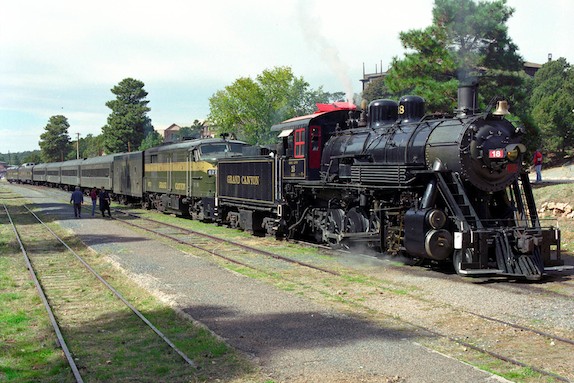Industry and Development

Undeterred from their failures at mining the Grand Canyon, many miners turned to an idea they were sure would bring them hefty profits – tourism. Buildings, a railroad, lodging and roads paved the way for an extremely successful tourism venture. Grand hotels were commissioned and built. Mary Coulter became the “Architect of the Grand Canyon,” designing and overseeing the building of many of the historic buildings still standing there today.
In 1893, the Grand Canyon was awarded federal protection as a Forest Reserve. It was later named a National Monument. In 1903, President Theodore Roosevelt, an avid outdoorsmen and conservationist, visited the Grand Canyon and worked to change it from a national forest and game preserve to a national monument.
Years later, in 1919, following the formation of the National Park Service and Congress’ authorization of the expansion of the Canyon’s designation from a national monument to a national park, the Grand Canyon was officially designated a National Park. At the time of its official designation, the Grand Canyon experienced roughly 44,000 visitors. Today, the park welcomes nearly 5 million visitors each year!
The Grand Canyon Today
With three major rims accessible to visitors and countless excursions and vacation experiences available to people of all ages and abilities, the Grand Canyon welcomes millions of visitors each year. Excursions include rafting expeditions, hiking, helicopter rides, mule rides, kayaking, mountain bike riding, camping and fishing.
According to Arizona Leisure Adventure Guide, 90% of the tourists that visit the Grand Canyon go to the South Rim, about 60 miles from Williams, Arizona. Also popular near the South Rim is the Grand Canyon Railway.
The more adventurous visitor to the Grand Canyon might make the jaunt over to the North Rim, about a 5 hour drive away from the South Rim. The North Rim is easier to get to through southern Utah and is quite remote with few services. Those who visit, however, often say they found the views much more breathtaking than those from the South Rim.
The third and often less talked about rim of the Grand Canyon is the West Rim. This area is not managed by the National Park Service as it sits on the Hualapai Indian Reservation. The West Rim is owned and operated by the tribe. In recent years, the tribe has gone to great lengths to boost tourism on the rim, constructing “SkyWalk,” a see-through ledge visitors can walk out onto to get a unique view of the bottom of the Canyon below their feet.
Check it out! The Grand Canyon is home to multiple historic buildings:
- The El Tovar Hotel: Located near the South Rim of the Canyon, the El Tovar Hotel was the premier lodging facility when it opened its doors in 1905. Today, El Tovar continues to offer an authentic, rustic experience, though most visitors will need to leave their rooms for the truly majestic views of the Canyon.
- Grand Canyon Railway Depot: Situated just down the hill from the El Tovar, The Grand Canyon Railway Depot is another must-see historic site at the Grand Canyon. It is one of the oldest wooden railway train depots in the country and is still in operation!
- Grand Canyon Lodge: Across the Canyon at Bright Angel Point sits the Grand Canyon Lodge, offering the only lodging inside the National Park. Whether visitors choose to stay in cabins or in traditional motel rooms, they are sure to be treated to the quiet serenity and peaceful surroundings of the North Rim.
- Desert View Watchtower: This historic structure was originally designed by the famed Mary Elizabeth Jane Colter and offers stunning views of the Canyon walls. It is from this watchtower where visitors can see where the Colorado River bends, continuing its flow west.
- Bright Angel Lodge: Also designed by Mary Elizabeth Jane Colter, Bright Angel Lodge is conveniently located amid the attractions of the South Rim.
- Grand Canyon Power House: Built in 1926, The Grand Canyon Power House originally served as an electric power plant for the National Park Service. It was designated a National Historic Landmark because of its unique design – similar to a Swiss chalet.